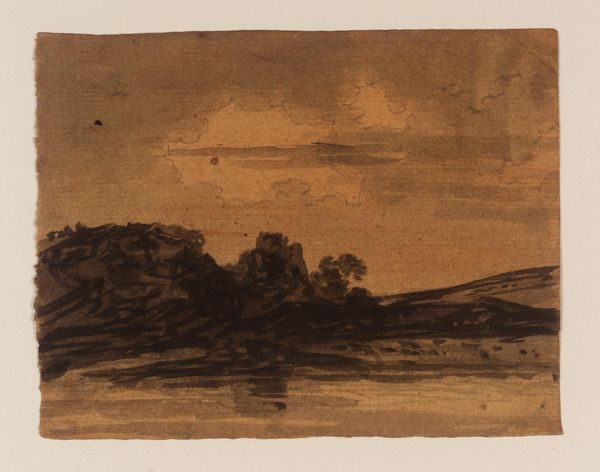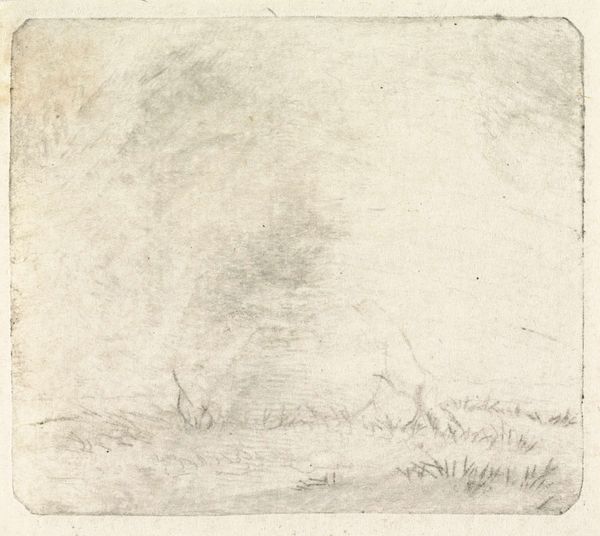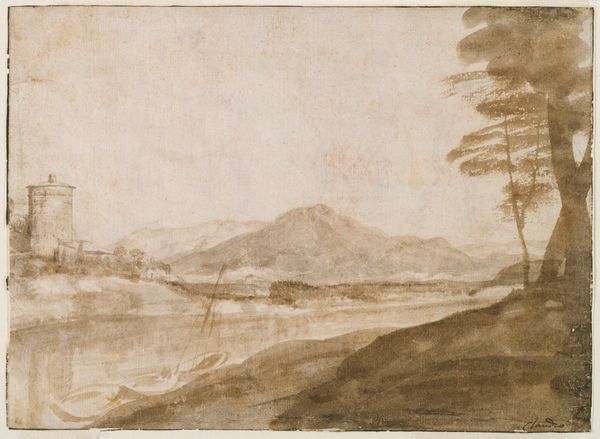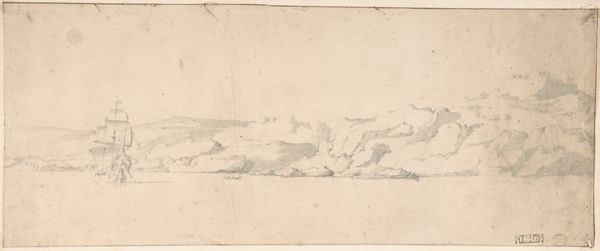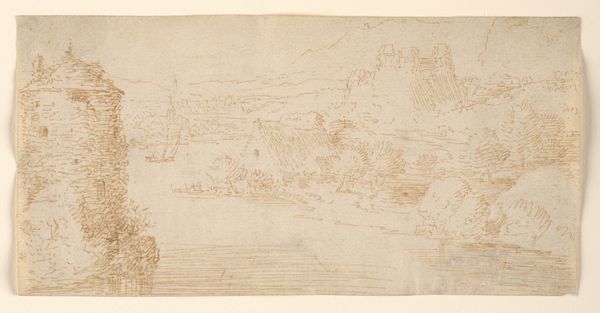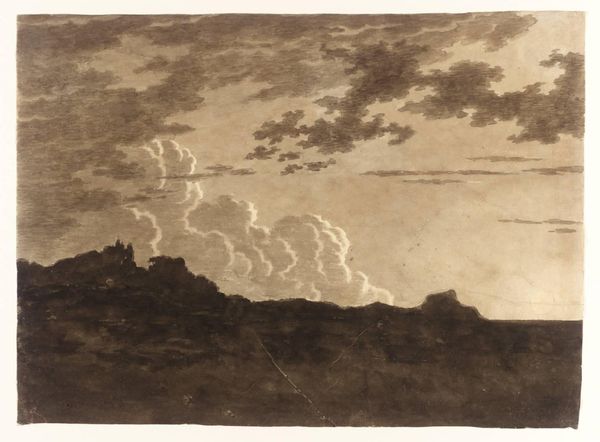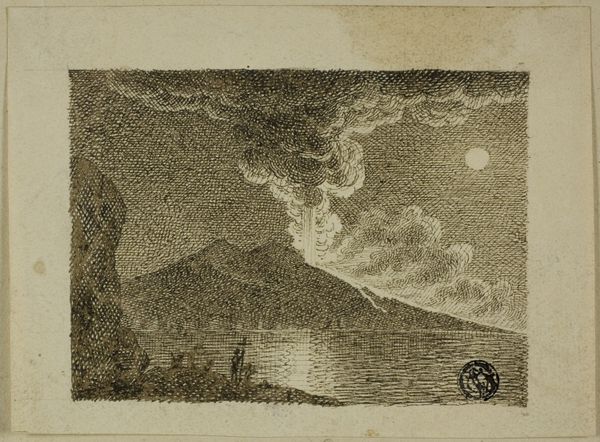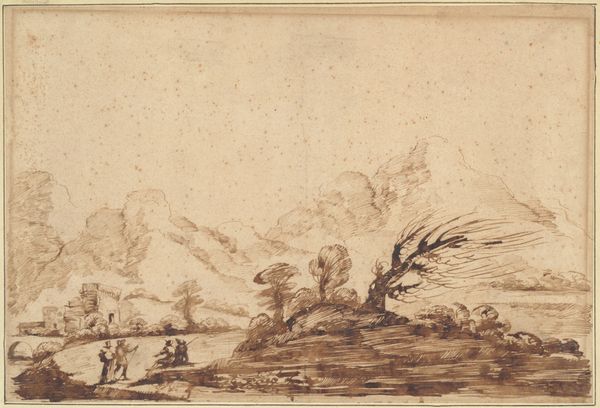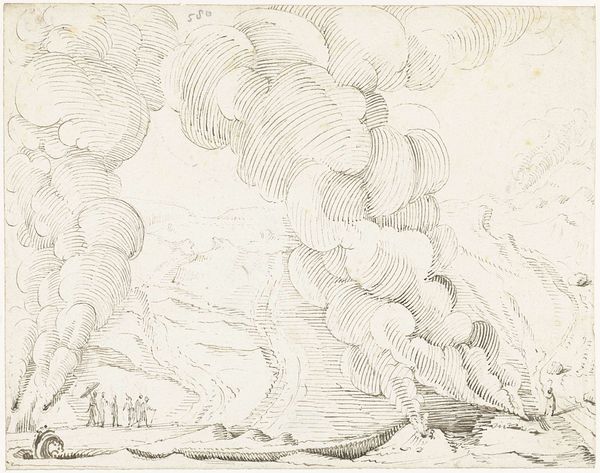
print, etching
# print
#
etching
#
landscape
#
etching
#
line
Copyright: National Gallery of Art: CC0 1.0
Editor: So this is “Saint Guenole,” an etching by Pierre Roche. I’m really drawn to how the scene is rendered using this etching technique. How does the medium inform the artwork? Curator: Well, first notice that etching, unlike, say, charcoal, demands careful planning of the picture-making. To get these varying line weights, Roche would have had to carefully control the biting of the plate. So, materiality dictates a move away from pure spontaneity. Now, thinking about landscape traditions in printmaking, especially considering that landscape prints at this time were cheap and portable – where do you see "Saint Guenole" fitting into this broader landscape of production? Editor: I see what you mean; it seems like a mass-produced piece that is made to reach many consumers and customers and could easily be displayed at one's home or resold in the market. Also, the materials used are limited and don't come across as 'lavish'. Can we still appreciate this as art? Curator: That’s the rub, isn't it? We're trained to valorize uniqueness and artistic "genius". But here we are confronted with a readily reproducible image. It makes us ask, "Where is the artistic labor really situated?" Is it in the initial drawing, or in the repetitive work of pulling prints? How might this impact the perceived value, or even meaning, of the image itself? I think it pushes us to redefine artistic merit beyond solely individual expression, and more towards how art interacts with its wider socio-economic setting. Editor: I never thought of it that way. By focusing on production, we consider not just the artist, but the whole system that brings this image into being. Curator: Precisely!
Comments
No comments
Be the first to comment and join the conversation on the ultimate creative platform.
